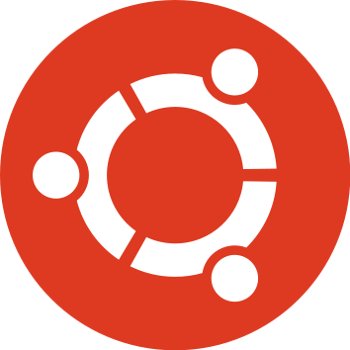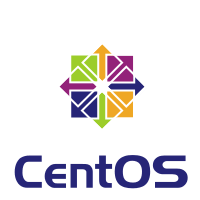Last Updated on October 31, 2020
A typical desktop Linux distribution consists of various software components including the Linux kernel, a broad collection of programming tools produced by the GNU Project, a graphical server, and other free and open source software.
Due to Linux’s open source nature, there are many hundreds of actively maintained distributions or ‘distros’ of the OS. Linux distros are like Linux software in general. They come and (some) go.
Back in 2006, Distrowatch ranked the following distributions in terms of page hit ranking1. The top ranked distro was Ubuntu. The other places were taken by openSUSE, Fedora, MEPIS, Mandriva, Damn Small, Debian, PCLinuxOS, Slackware, Gentoo, KNOPPIX, FreeBSD, Kubuntu, VectorLinux, and CentOS.
It’s interesting to see how these distributions fared over the past 14 years. Are they still going strong, are they outclassed by other distributions, or are they only remembered like fingerprints on an abandoned handrail?
Distributions still placed in top 15 in 2020

Ubuntu, Debian, Fedora, openSUSE are the only distributions that remain in the top 15. They were hugely popular in 2006, and remain so in 2020.
Ubuntu first burst into the Linux scene in October 2004 and is updated every six months. Ubuntu is perhaps the most heard-of Linux distro, and probably still the best. It is Debian-based and appears to outdo all its competitors because of its easy installation and excellent hardware support.
Debian is the most venerable among the 4, launching in September 1993, at a time when Microsoft was selling Windows 3.1.
Fedora and openSUSE are also hugely respected distros, backed by large and knowledgeable communities, and sponsored by RedHat Inc. and SUSE Software Solutions Germany GmbH respectively.
Active distributions that aren’t placed in top 15 in 2020

Nowadays, CentOS flirts around the top 15, but for the past 12 months has just been edged out.
CentOS provides a free, community-supported computing platform functionally compatible with its upstream source, Red Hat Enterprise Linux (RHEL). CentOS is an extremely capable distribution popular among hosting companies, data centers, and businesses.
PCLinuxOS is a rolling release distro that’s still actively maintained and offers a distinct and somewhat unusual approach. PCLinuxOS was originally forked from Mandriva.
Like Debian, Slackware is a longstanding distribution created in 1993, and the basis for other distros. While its latest release was back in June 2016, work continues on this distro with daily updates to the current pre-release. It remains the longest active Linux distro.
Gentoo is another respected volunteer-driven distro that’s going strong although it doesn’t receive much press coverage.
KNOPPIX is designed to run from a Live CD/DVD or USB flash drive. It can be used as a productive Linux system for the desktop, educational CD, rescue system, or adapted and used as a platform for commercial software product demos.
FreeBSD is, of course, not a Linux distro. While it shares similarities with Linux, it’s an open-source BSD operating system, and the most popular of the BSD systems.
Kubuntu is an official flavour of the Ubuntu operating system. Like Ubuntu, it has a biannual release cycle offering a current version of the KDE desktop at each release.
Distributions that are no longer around
 Mandriva used to be one of our favorite distributions. Sadly this French distribution saw its last release in 2011. But the project lived on in a way. Mageia is a fork of Mandriva Linux formed in September 2010 by former employees and contributors. It’s not nearly as popular today as Mandriva was in 2006 though.
Mandriva used to be one of our favorite distributions. Sadly this French distribution saw its last release in 2011. But the project lived on in a way. Mageia is a fork of Mandriva Linux formed in September 2010 by former employees and contributors. It’s not nearly as popular today as Mandriva was in 2006 though.
MEPIS was a set of Debian/Ubuntu-based Linux distros designed for both personal and business purposes designed to be simple to use. MEPIS saw its last release in 2013.
Damn Small Linux was designed to run graphical software in older PC hardware. This was a mini-distro that could fit in a 50MB live CD. It saw its last (preview) release in 2012.
VectorLinux is effectively dead. It hasn’t seen a new release since 2017.
Other Distributions that are placed in top 15 in 2020
Many distributions have entered the top 15, with the top spots taken by MX Linux (Debian-based), Manjaro (Arch-based) and Mint (Ubuntu-based).
The other distros are elementary (Ubuntu-based), Pop! OS (Ubuntu-based), Solus (independently developed), Zorin (Ubuntu-based), deepin (Debian-based), KDE neon (Ubuntu-based), antiX (Debian-based), and Arch (independently developed).
1 It’s important to remember that the page hit ranking has never been an indicator of the popularity of a specific distribution. For a start, it’s easy for malicious users to manipulate Distrowatch’s page hit ranking. Just as important it cannot possibly reflect the usage of any distribution for many reasons.
All the articles in this series:
| Now and Then - See How Promising Open Source Software Has Fared | |
|---|---|
| DFileManager | A venerable file manager |
| More Distributions | The fate of 15 more distributions |
| Programming Languages | Go, Rust, Dart, Julia, Clojure, Elixir and more |
| File Managers | SpaceFM, gentoo, Marlin, Eagle Mode, and Beesoft Commander |
| Distributions | The fate of 15 distributions |
| Lean Desktop Environments | Xfce, ROX Desktop, LXDE, FVWM-Crystal, EDE, and Étoilé |
| IDEs | Brackets, Light Table, Julia Studio, Dart Editor, and Aptana Studio |
| Music Players | qomp, Lollypop, Yarock, Pragha, and Volumio |
| Web Browsers | eww, Liri, Vivaldi, Ubuntu Internet Browser, Fifth, Dooscape, and Breach |
| Terminal Emulators | Terminology, Cool-Retro-Term, and Final Term |

I have fond memories of Mandriva.
I’m still using Slackware, nothing beats it.
Oh dear
same. Slackware64-current with KDE+Plasma, wine-staging 5.18.
I work on it, game with it and the only thing that gives real hassles are kiddie distros that make everything depend on systemd.
Nope, not really… all the systemd distros I’ve tried have far less issues than the non-systemd distros. I’ve been using Linux Mint/Cinnamon for four years, now, without the slightest glitch. To me, experience speaks the loudest so from my experience, I’ll stick with systemd.
Distrowatch rankings mean next to nothing. If you believed them, the makers of MX Linux would dominate the field, and I bet fewer than 0.05% of machines use it and fewer than that have it as their daily driver.
OpenMandriva is also much better and probably more-used than Mageia, and there are at least two other remaining forks, Rosa and PCLinuxOS.
No one really cares about your opinion about which is the ‘better’ distro. You have no idea what distro is used more than another. Please troll somewhere else.
0.05%, lol, an invented stat.
I totally agree. DistroWatch has some good information but their ranking system is just click-bait and only explained as such in the small print most folks don’t ever see. Due to recent circumstances Russian distros might not be flavor of the month but ROSA, ALT and Calculate have always been top performers and OpenMandriva the best fork of the first.
Where can you get reliable data about the number of people using each distribution?
You can’t.
Still running SuSE (nowadays OpenSuSE) since more than 25 yaers. Slackware, Debian, Redhat, CentOS, FreeBSD and OpenBSD, all used for testing, learning, demo’s, production for customers, but no distribution could be more pleasant than the German distro without polityical-correct statements about diversiry and such problems stemming from the USA. Socio-clutural problems should be kept apart from Free Software.
Slackware remains my favorite distro, followed by Kubuntu. In Kubuntu’s case, we actually installed Ubuntu and then added kubuntu-desktop. CentOS is probably more popular in the server space than on the desktop. I typically mix between Debian and CentOS on our servers. OpenBSD makes a very good basis for firewalls.
Glad to have this diversity of options in the Free Software world.
I’m a fairly new Linux/BSD user, started as a distro/desktop/window manager hopper about a decade ago and my very first taste was Bunsenlabs and a distro whose DE is Xfce which I can’t remember. later tried many stuffs, major and minor, but never been a fan of Fedora and Red Hat/CentOS (including based-on distros). I probably have tried 50 distros or so, on physical hardware (don’t like the experience on VM), it’s a laptop and now due to the hopping, its hard drive is only 30% remained available to use lol. also tried some live-medium only stuffs like Puppy Linux. now I have 300 distros in my “archive hard drive” which takes about 400G which remained updating. I still hop around and finally decide to make a distro myself later.
well, my favorite DEs are always on the minimal side, most are Xfce, MATE, Openbox, IceWM, etc. based, and now my major PC is with Xubuntu for months. it doesn’t mean my PC has lower hardware, I just think it’s not necessary to adapt to the DE/WM if it’s resource-heavy. that’s why I began to avoid GNOME and DDE about 4 years ago since they’re RAM burner for me. really hate Ubuntu choose GNOME as their main DE now, Unity is much better for me. and that’s also why I use Xubuntu if I’d like a “Debian branch” one. for “Arch branch”, my favorite is Arco, cuz I’m not a huge fan of total DIY distro like Arch or Gentoo or OpenBSD, but want somewhat freedom and keep minimal. for BSD, my favorite are FuryBSD which was dead now…